17 more of the 176 books nominated for the Fiction Picture Book award for you today and my total reading count ended up at 168/176! I have been unable to locate the final 8 books and therefore will not be reading them... unless they show up in the mail between now and the end of Round I judging!
The Cybils committee has described an award-winning Fiction Picture Book as "a celebration of story and illustration, with lasting appeal for kids and/or adults. The best picture books completely excel in art, story, kid-friendliness, and adult appeal. A Cybils-winning picture book adds that special "It Factor." In message, in world-view, in connection, in humor, in reach, a book with "It Factor" rises to a higher level." (Cybils: 2009 Nominations Fiction Picture Books).
The Cybils committee has described an award-winning Fiction Picture Book as "a celebration of story and illustration, with lasting appeal for kids and/or adults. The best picture books completely excel in art, story, kid-friendliness, and adult appeal. A Cybils-winning picture book adds that special "It Factor." In message, in world-view, in connection, in humor, in reach, a book with "It Factor" rises to a higher level." (Cybils: 2009 Nominations Fiction Picture Books).
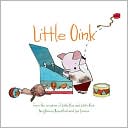 Rosenthal, Amy Krouse.
Rosenthal, Amy Krouse.Little Oink.
February 2009.
Chronicle Books.
Little Oink is very different from other pigs - rather than appreciating messiness as a pig should, Little Oink prefers cleanliness. Here, readers watch as he comes to terms of living like a "pig." Although there is no moral to be learned here, I could definitely see this book being used as an inspiration during clean-up time. Children will be chuckling at the story of the little pig who seeks cleanliness in his "sty" of a world and will quickly be appreciative of their own clean house at the end of the day!
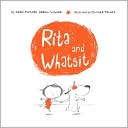 Arrou-Vignod, Jean Philippe.
Arrou-Vignod, Jean Philippe.Rita and Whatsit.
April 2009.
Chronicle Books.
It's Rita's birthday and she's in a bad mood... just when she thinks it can't get any worse, Rita spots a gift moving across the floor. Inside, she discovers a dog, whom she names Whatsit because he responds to no other name. I found the story a little weird as I don't think too many children wake up gumpy on their birthday, however, the unique illustrations and the tenderness shared between Rita and Whatsit at the end of the book made it a worthy read!
 Palatini, Margie.
Palatini, Margie.Lousy, Rotten, Stinkin' Grapes.
August 2009.
Simon & Schuster Books for Young Readers.
Fox learns a slow lesson that he's not always the sliest, smartest, most clever animal as each of his attempts to retrieve a bundle of grapes fails. However, even after his friends help him in using their skills to retrieve the grapes, Fox won't thank them or even accept their offering, instead calling them "lousy, rotten, stinkin' grapes. An important message is to be learned here (even though fox doesn't quite catch on)... it is important to accept that someone may be more capable of doing something than you and accept that everyone has different capability levels... this is what makes us each unique!
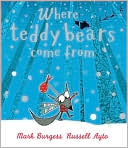 Burgess, Mark.
Burgess, Mark.Where Teddy Bears Come From.
August 2009.
Peach Tree.
When Little Wolf spends a night unable to sleep, he sets out in search of a teddy bear, in hopes that one will be the answer to his sleepless nights. However, he must first determine where Teddy Bears come from - and asks a variety of fairy tale characcters before discovering that they come from Santa! Children who "believe" will love this new, unique take on a Christmas story!
 Cohn, Scotti.
Cohn, Scotti.One Wolf Howls.
March 2009.
Sylvan Dell Publishing.
Readers venture throughout the twelve months of the year, watching (through text and very realistic illustrations) how wolves interact with their environment throughout the different seasons. Also combined with the teaching of months of the year and seasons, is the practice of counting from one to twelve (for example, in January, one wolf explores the forest... in December, there are twelve wolves exploring the forest). There is no actual moral, but there's plenty to be learned!
 Crow, Marilee.
Crow, Marilee.Alleycat.
March 2008.
Guardian Angel Publishing.
A lonely alleycat sets out in search of a new, better life outside of the alley. Just when he's ready to head back to life as an alleycat (and ultimately give up on his dream), a family in need readily accepts him... as long as he can be a mouser - which should be no problem for a cat! The message to be taken away from this unique story is that dreams can be achieved if you're willing to chase them!
 Chatel, Kim.
Chatel, Kim.A Talent for Quiet.
February 2009.
Guardian Angel Publications.
Reanie seems almost afraid of her setpfather - as though he'll cause a problem with her mother if she dares speak. However, a "photo safari" and Reanie's "talent for quiet" allow them the connection they need to reach a new level in their relationship - acceptance of each other in their lives. This book would be an important read for children who are or have struggled with accepting stepparents into the home, as they'll immediately develop a personal connection with Reanie's story.
 Bloom, Suzanne.
Bloom, Suzanne.A Mighty Fine Time Machine.
March 2009.
Boyds Mills Press.
When an armadillo and aardvark trade their meals for a time machine, Samantha the anteater thinks they're crazy - that is, until she discovers how to really put the time machine to work, using her own love of books as inspiration. The real message to be taken away from this story is that with a little creativity, books have the possibility of becoming a "time machine" all on their own! I think children will find the mishaps of armadillo and aardvark to be humorous and will enjoy reading this story! One activity to use in collaboration with this book would be to discuss the ways in which books could be considered time machines, then pose the question, "If you had the chance to travel back in time, where would you go?" Write down each child's response and then have them research a book on that given topic during their next visit to the library, allowing them to time travel!
 McAllister, Angela.
McAllister, Angela.Leon and the Place Between.
August 2009.
Templar Books (Candlewick Press).
Leon's family attends a local magiv show. His brother Tom does't believe in the magic - that is, until Leon visits the "place between," there and back again where magic sends you and returns with a white bunny and a very important message for Tom and little sister, Jo. Things can happen, if you just believe (reminds me of Polar Express)! Self taught illustrator, Grahame Baker-Smith's use of different styles/media remind me of digital scrapbook - adding in the glitz and glitter to make the illustrations feel as though they have come alive (almost as though you're watching a movie as you turn the pages)! This is a great book to keep children believing in the fantasy of magic.
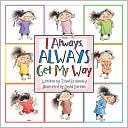 Krasnesky, Thad.
Krasnesky, Thad.I Always, ALWAYS Get My Way!
September 2009.
Flash Light Press.
Little Emmy always gets her way - after all... she's only three! However, this family finally has the opportunity to see the real suspect at work and decides to teach her a lesson of her own (gently, of course). Older siblings and parents will totally connect with little Emmy's behavior and the feelings that coincide with her always having her own way about things. However, hopefully, they'll be learning the all too important message that this book portrays - don't give in to to your little ones (or big ones for that matter) and let them get away with things because of that oh-so-cute face... they'll quickly learn to milk you for all you're worth!
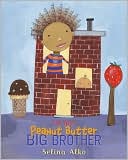 Alko, Selina.
Alko, Selina.I'm Your Peanut Butter Big Brother.
March 2009.
Alfred A. Knopf.
A bi-racial child is curious what his sibling-to-be will look like and explores the different skin tones through familiar foods that nearly all children can relate to. The artwork itself does a beautiful job depicting the explored skin tones, while also portraying that love can exist between all, despite anyone's skin color! The book is very multi-cultural, as it depicts many different races while showing human acceptance throughout. The obvious message here is that despite our appearances, we are all (virtually) the same and deserve the same love and respect, not to mention acceptance!
Naomi's Tree.
March 2009.
Fitzhenry & Whiteside.
The cherry tree, planted by Naomi's grandmother years earlier becomes a memorial to the life that once existed, deemed the "Friendship Tree," as the world was created for friendship. This tree in particular, marked a place where years of lasting frienship developed. Throughout the world, the songs of the friendship trees (which represent memories), and the songs of those who love us, will forever fill the air like cherry blossoms in the spring. This would be a wonderful book to help heal children dealing with the grieving process.
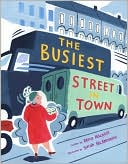 Rockliff, Mara.
Rockliff, Mara.The Busiest Street in Town.
October 2009.
Alfred A. Knopf.
Agatha May Walker is tired of the everyday rush on (ironically named) Rushmore Boulevard and decide to do something about it. Risking the cars, motorcycles and trucks, Agatha is determined to slow down this busy world and encourage everyone to take time to smell the roses! Adults will enjoy the easy to reach message along with the humor... children, too, should quickly catch on to the message - in a busy world where (in many cases) we lead chaotic lives, it's important to:
stop and smell the honeysuckle,
listen to the mariachi band,
and best of all, sample the sweet and spicy gingersnaps.
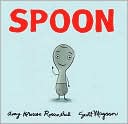 Rosenthal, Amy Krouse.
Rosenthal, Amy Krouse.Spoon.
April 2009.
Disney*Hyperion Books.
Using a simple, bit of everyday equipment, Rosenthal teaches children a big lesson in a simple way - celebrate the things that make you special, rather than dwelling on what you wish you had that others have. Spoon dwells on the fact that he's borting - he never gets to cut or spread, go stir-crazy like fork, or even be cool and exotic like chopsticks. However, with a gentle reminder from his mother, he soon realizes he's just as special as his friends - just in different ways... after all, no knife, fork or chopsticks will ever see the likes of ice cream!
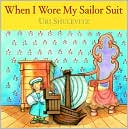 Shulevitz, Uri.
Shulevitz, Uri.When I Wore My Sailor Suit.
September 2009.
Farra, Straus & Giroux.
A young boy starts out the day with his imagination fast at work, as he quickly changes into his sailor suits, ready for an adventure on the high seas. After capturing a pirate's treasure map, the young boy quickly discovers that his imagination just may have gotten the best of him for one day and decides to once again set sail - headed back home at last. This book is appropriate for an adventure, imagination or pirate themed read-aloud.
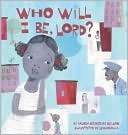 Nelson, Vaunda Micheaux.
Nelson, Vaunda Micheaux.Who Will I Be, Lord?
October 2009.
Random House Children's Books.
A young girl wonders who she will grow up to be as she explores the lives (and in some cases) career choices of her extended family members. All of the career choices are explored in a delicate fashion, which is extremely important in a world when we're often quick to judge people based on their field of work. The message is easy to take away and I'm sure children will easily understand that it's up to them who they will turn out to be and what they will do with their lives!
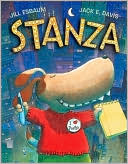 Esbaum, Jill.
Esbaum, Jill.Stanza.
April 2009.
Harcourt.
Stanza, the poetry loving dog, is constantly teased by brothers who think poetry is weird. However, when his poetry lands him second place prize - a year's worth of biscuits, they're both quick to offer their support in eating the prize. Stanza quickly teaches them an important lesson - we all have different talents and we should appreciate each other's strengths as well as weaknesses! This book is important because it allows children to make a personal connection to the idea of writing poems, rather than just reading a book of poems for inspiration... they will be able to recognize parts of their life that would lead an open door to the world of poetry, while teaching a very important lesson at the same time!
If you're interested in finding out more information about any of the books reviewed or if you'd like to purchase the books, click the cover image for a link to Amazon.com.








0 comments:
Post a Comment